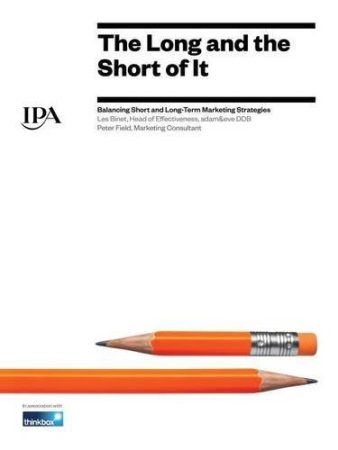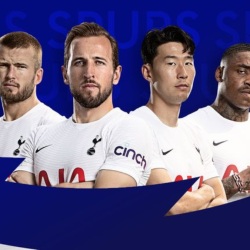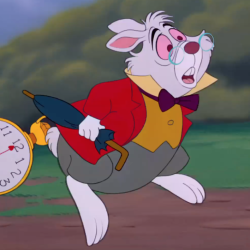Much like maintaining balance in everyday life, achieving harmony in digital is something that requires consistent effort and proactivity from marketers.
First, there are the goals we set: these should be realistic and account for both long-term and short-term gain. When it comes to advertising, while quick wins such as return on ad spend have their allure, investing in longer term brand equity, including ad recall and brand sentiment, is what truly propels businesses to success.
Nowhere is this examined as well as Les Binet and Peter Field’s legendary white-paper The Long and the Short of It. This work emphasises the importance of striking a balance between short-term and long-term advertising strategies. The key takeaway being that while short-term tactics may deliver immediate results, long-term brand building is crucial for sustained success. Binet and Field argue that a blend of both approaches is key, as short-term activation can generate sales in the here and now, but long-term investments in brand equity drive growth and consumer demand over time.
What this means in the world of digital media
Sales activation is focused on months (or even weeks) while brand building takes years. As a result, advertisers ideally need to be running at two speeds, catering to both goals in their advertising efforts in unison. This two-speed approach impacts everything from what you’re measuring, to how you’re measuring it and the targeting tactics used. Take creative for example: in the short-term while still speaking to a consumer’s emotions is applicable at both speeds, the messaging within that creative should also be rational. This consumer is in-market and actively comparing options — success will be delivered via informational and educational messaging. Transactional call-to-actions are a must. However, when we look at what is effective in the long-term, the messaging should be emotional, to prime the audience, whilst at the same time being memorable to build brand recall.
During economic lulls, all too often we see brands focusing on only short-term, sales-based activation. Which is understandable if you’re viewing performance through a return on ad spend lens (going back to the balanced goal setting we highlighted above). You’ll look great over a quarter, but in actuality you’re stifling future growth. You’re focusing on consumers who know your brand and are likely already close to a decision. You are drinking from your own well in a drought, which of course you should do, but you should also be focusing on finding new water sources and deepening your well.
Looking at search as part of the media mix, we can see the long and the short of it play out
Both SEO (search engine optimisation) and PPC (pay-per-click) have their role to play in customer acquisition, the key is getting the balance right in where you allocate time, energy and budget to achieve your goals. Returning to our two-speed approach above, PPC can achieve very quick results. We can outline which search terms we want to serve ads alongside, we can create precise messaging and direct traffic to specific landing pages. We can go from zero to having active, sales-generating campaigns live in a matter of hours.
On the other hand, SEO takes time. It takes months to rise in search engine rankings, through a combination of technical on-site SEO, content creation and link building, all focused on demonstrating experience, expertise, authoritativeness, and trustworthiness. Depending on how competitive an industry is, there can be a lot of sustained work going into SEO but you may not be rising higher in the search engine results page (SERP) as quickly as you, or your CFO, wants.
With that being the case it could be tempting to ignore SEO in favour of the more immediate results driven by PPC. You could divert all budget to PPC, aggressively bidding on your brand terms, category terms or even your competitor terms if your budget allows. You will be delivering the goods in your weekly, monthly and quarterly reports. Without a diversified strategy however, you’ll find yourself beholden to PPC, without allocating resource to building out your authority across category and brand terms, you may find that you have to continually bid on search terms that in reality could be top of the SERP organically, thus saving you paid media budget and allowing you to reallocate this budget elsewhere within your paid media strategy.
PPC and SEO work best hand in hand, using PPC budget to cover those search terms that are most valuable and, in cases where SEO is strong enough, reallocating PPC spend to broaden our coverage in search auctions to enhance performance.
It summary, achieving digital harmony parallels the quest for equilibrium in life in general. It’s all about balancing long-term ambition with short-term goals. You’re not going to run a marathon overnight but you can go for a short jog. If you build up your running activity consistently, in time those longer term marathon goals can be achieved.
It’s vital then that marketers also keep in mind their long- and short-term goals when defining advertising metrics, targeting strategies, and tactics. Remember that while PPC delivers swift outcomes, SEO demands time for ranking growth. Both are important pillars of your overall marketing mix. Ignoring SEO risks over-reliance on PPC. Ignoring PPC removes flexibility and the ability to react quickly to changes in the market. Both tactics, when aligned, deliver the biggest impact and serve as a reminder that getting the balance right requires effort.
Featured image: Francesco Paggiaro / Pexels































